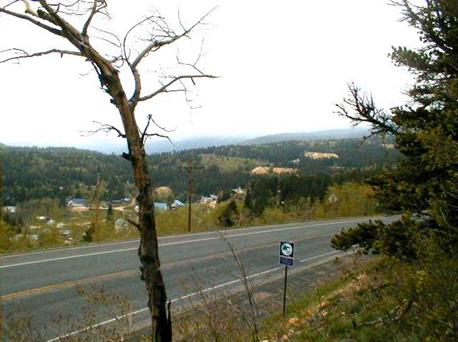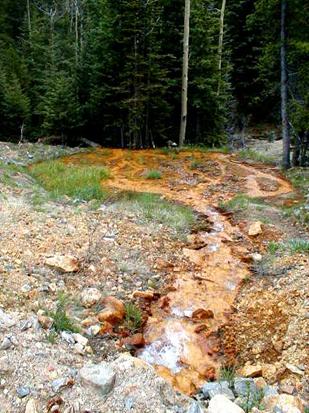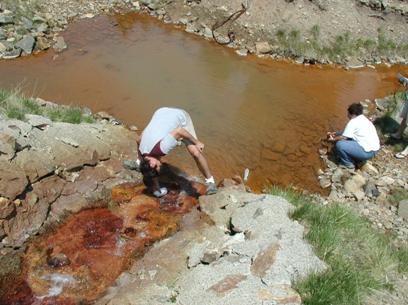
Biogeochemistry
of Carbon and Nitrogen in Aquatic Environments
Research
Topics
Index
Project Home
|
Biogeochemistry
of Carbon and Nitrogen in Aquatic Environments
Research
Topics
Index
Project Home |
|

| Acid Mine Drainage (AMD) is a serious environmental problem in many parts of the world. AMD is formed when water, such as rain and snow melt, hits waste rock piles that have been left over from the mining of precious metals. These waste rock piles dot the landscape of many mining areas, including Colorado . As the water flows through these waste piles, acid is produced and many heavy metals are leached into near-by surface-water streams. These streams become very acidic and contain many toxic metals. Once these streams are contaminated, it is very difficult for life to exist. For example, many native fish cannot survive in these harsh environments. Microorganisms are the dominate form of life in this type of environment. Most of the research conducted on microorganisms in these environments are on iron and sulfate cycling bacteria. |  |
 |
Our research focuses on the microorganisms capable of cycling nitrogen in these acidic, heavy metal laden streams in Colorado. Most of the nitrogen in these streams is in the form of nitrate. The nitrate enters the stream systems via snow melt and nitrogen deposition. The process of denitrification, the biological conversion of nitrate to nitrogen gas, is often hindered in low pH environments. However, through the conversion of nitrate to nitrogen gas, alkalinity is produced, and the pH in the system is increased. This would be particularly important in the low pH AMD environments. If denitrification is occurring, can it be enhanced to produce more alkalinity, thus increasing the pH of AMD waters. This research involves two main objectives:
Can they be stimulated to produce more alkalinity? Are they in all AMD streams?
|
| Laboratory
microcosm studies have been done to examine the presence of denitrifiers
and ways to stimulate their denitrification capacity. We are
currently starting the second phase of this project, where we are using
microbial techniques to sample the DNA of these AMD stream
sediments to find the denitrifiers that are present. Once
we learn who they are, we may gain more insight into how these
microorganisms can live in such extreme environments. Questions or Comments: Email Jenny Baeseman |
 |
| Projects Index Top of Page |
| Return
to Biogeochemistry
of Carbon and Nitrogen in Aquatic Environments Home Page
USGS Home Page | USGS Water Resources | USGS Toxics Hydrology Program | USGS NRP | |